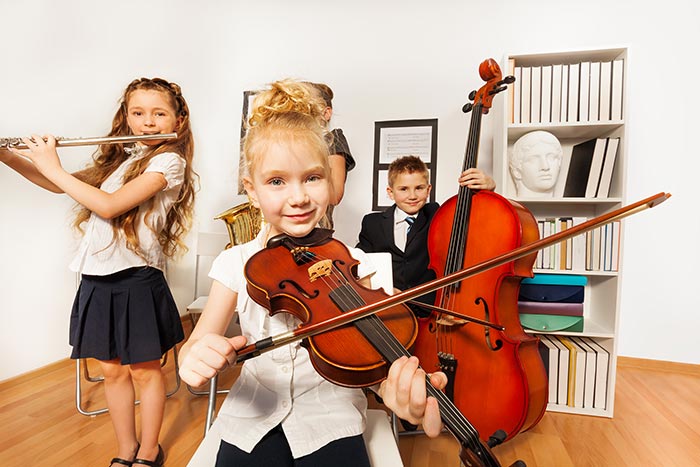Rhythm plays a fundamental role in early music education, serving as the heartbeat that underpins musical expression and comprehension. This introductory exploration delves into the significance of rhythm in the context of early music education, highlighting its pivotal role in fostering a strong musical foundation for young learners.
From the earliest stages of human existence, rhythm has been an integral part of our communication and expression. It transcends cultural boundaries and connects people through the universal language of music. In early music education, rhythm holds a special place as it lays the groundwork for understanding musical concepts and developing essential skills.
Rhythm encompasses the organisation of time in music, encompassing elements such as beat, tempo, and meter. These rhythmic components provide structure and order to musical compositions, allowing young learners to make sense of the auditory landscape. Here are some key reasons why rhythm is of paramount importance in early music education:

Cognitive Development
Cognitive development in early childhood is intricately tied to the importance of rhythm. The exposure to rhythmic patterns and musical experiences during this critical period plays a fundamental role in fostering various cognitive skills, including language acquisition, memory enhancement, and the development of spatial-temporal reasoning abilities. Rhythm not only stimulates neural connections but also supports the synchronisation of brain functions, enhancing a child’s capacity to process and retain information.
Motor Skills
Motor skills development in early childhood is closely intertwined with the significance of rhythm. Engaging in rhythmic activities such as dancing, clapping, and drumming not only fosters a sense of coordination but also supports the refinement of fine and gross motor skills. These activities encourage children to move their bodies in sync with musical beats, promoting balance, agility, and spatial awareness. Moreover, rhythmic experiences enhance proprioception – the awareness of one’s body in space – contributing to better posture and physical control.
As children explore rhythm through movement, they not only lay the foundation for proficient motor skills but also gain a deeper understanding of the connections between their bodies and the world around them, fostering a holistic development that extends beyond the realm of music.

Language Skills
Language skills development in early childhood is profoundly influenced by the importance of rhythm. Exposure to rhythmic patterns, songs, and rhymes during the formative years can significantly enhance a child’s linguistic abilities. Rhythmic experiences promote phonemic awareness, helping children recognise and manipulate sounds in language, which is a crucial precursor to reading and writing.
Furthermore, rhythmic activities like singing nursery rhymes and participating in call-and-response chants encourage vocabulary expansion and improve comprehension skills. Beyond the cognitive benefits, engaging with rhythm also fosters communication and social bonding as children often engage in rhythmic activities together, promoting language development in a cooperative and enjoyable context.
Social Interaction
Participating in rhythmic group activities cultivates social interaction and cooperation among young learners, enabling them to develop essential interpersonal skills as they practice active listening, synchronisation with peers, and effective teamwork.

Emotional Expression
Rhythmic experiences provide young children with a non-verbal outlet to express and regulate their emotions. Through movement, music, and dance, children can convey a wide range of feelings, from joy and excitement to sadness or frustration.
This emotional expression not only fosters a deeper understanding of one’s own emotions but also encourages empathy as children observe and respond to the emotions expressed by others through rhythm.
By engaging with rhythm in early age, children develop a rich emotional vocabulary and gain valuable tools for emotional self-regulation, setting a strong foundation for healthy emotional development and well-being throughout their lives.
Rhythm allows children to express themselves emotionally through music. They can convey joy, sadness, excitement, and other emotions through rhythmic patterns, providing an outlet for self-expression.
Cultural Awareness
Early exposure to rhythm introduces children to a diverse array of musical traditions and cultures. This broadens their horizons and encourages cultural appreciation and understanding.

Foundation for Musical Literacy
Rhythm is the gateway to understanding more complex musical concepts, such as melody and harmony. It forms the basis for reading and interpreting musical notation, which is essential for musical literacy.
Creativity and Composition
Creativity and composition are intertwined elements in the world of art, music, writing, and various other creative disciplines. Creativity is the wellspring from which original ideas, concepts, and expressions flow. It involves thinking outside the box, breaking established patterns, and embracing innovative approaches.
Composition, on the other hand, is the structured organisation of these creative ideas into a coherent and meaningful form.
It’s the process of arranging elements such as notes in music, words in literature, or visual elements in art to convey a specific message or evoke particular emotions.
Rhythm encourages creativity as children experiment with creating their own rhythmic patterns and compositions. It empowers them to explore their musical ideas and develop a sense of artistic expression.
Conclusion
Rhythm is the cornerstone of early music education, offering numerous cognitive, physical, emotional, and social benefits. By incorporating rhythmic activities and exercises into early music curricula, educators can nurture a deep and lasting love for music while laying the foundation for a lifelong musical journey.
In the subsequent sections, we will delve deeper into specific aspects of rhythm in early music education and explore practical strategies for its effective incorporation into teaching methodologies.



